

 The South African
The South African
by J Robert Williams
According to previously published sources there was no such rank as colonel in the armed forces of the South African Republic. Apart from the commandant General the highest rank was lieutenant-colonel and that rank was held solely by the commanding officer of the Staatsartillerie.(1) However an illustration of Colonel Adolf Schiel which appeared on page 51 of the December 1971 Military History Journal(2) shows him with the collar rank distinction of a full colonel viz, three stars on a full laced collar. This caused the writer to wonder what uniform Schiel was actually wearing in the picture.
In the National Army Museum, London, there is a fine photograph of Schiel in which he is wearing uniform with a full colonel's rank distinction (the drawing with Mr Gomm's article was probably based on this photograph).(3)
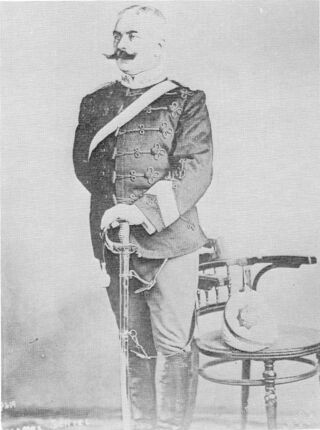
Fig 1. Adolf Schiel, Commandant Johannesburg Fort, 1899.
Reproduced by kind permission of
the National Army Museum, London.
This photograph (Fig. 1) also brought to light another interesting feature.
Behind the rank stars on the collar is a flaming grenade.(4) A picture
located in the Cape Archives (Fig. 2) shows the grenade collar badge even
better. The flaming grenade is emblematic of artillery units but was not
worn on the collar by officers of the Staatsartillerie (see Fig. 6). In
some countries (e.g. Belgium, France, Italy and the Netherlands) the grenade
was, and is, the emblem of the national police force; in these countries
the national police forces are military units. This gave rise to the slight
possibility that the grenade indicated the Z.A.R. Gevangniswezen (Z.A.R.
Prison Service) which had some police implications. Schiel was appointed
Inspector van Gevangnissen (Inspector of Prisons) with the rank of captain
in April 1896, the title being changed to Hoofd van Gevangniswezen (Chief
of Prison Service) during the same month. In this position Schiel was in
charge of all prisons and arrest locales in the police stations of the
Z.A.R. As a captain, Schiel would only have had three stars on the collar
and no lace, so this would rule out the uniform belonging to the prison
service. It was thought that the uniform might have been one devised by
Schiel to wear in his capacity as Colonel-Commandant of the German Commando,
but the presence of the full dress helmet and the sword ruled this out.
Photographs of Schiel with the German Commando show him wearing a dark
slouch hat with a light pagri and a plain dark (probably blue) frock.
A rather faded photograph captioned 'Officiere van die Fort, Johannesburg
1898' was found in the War Museum at Bloemfontein which shows Schiel with
a group of officers (Fig. 3).(5) Apart from one in civvies, five officers,
including Schiel, wear the same pattern uniform and have grenades on the
collar. Schiel again sports the three stars of a colonel. The officers
are identified as (back row) - Lieutenant Grothaus, Captein S Eloff and
Lieutenant F W von Wickman, (front row) - Lieutenant von Witzel, 'Komdt-Kolonel'
A Schiel and Lieutenant von Weiss.(6) These officers, including Schiel,
obviously belong to the same formation - the garrison of Johannesburg Fort.
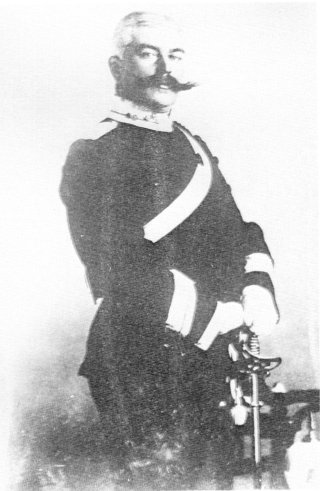
Fig 2. Adolf Schiel, Commandant Johannesburg Fort, 1899.
Reproduced by kind permission
of the Cape Archives, Cape Town.
Mindful of the Jameson Raid and the fifth column in their midst on the Rand, the Z.A.R. Government decided to build a fort around the prison in Johannesburg.(7) This prison of course came under Schiel's jurisdiction as Chief of the Prison Service. Schiel was appointed a member of the special building commission and was given responsibility for the construction of the fort. By mid 1897 the building was so well forward that a garrison could be contemplated and the question of who was to command the fort. The manning of the fort and those around Pretoria raised the problem of where were the men to come from. Major P E Erasmus proposed the formation of a separate Fortress Artillery (Vesting Artillerie) specifically to man the forts. The Commandant-General was against the proposal because of expense. However Lieutenant-Colonel Trichardt and Major Erasmus persisted with pressure for a separate Fortress Artillery. Eventually the Volksraad sanctioned an increase in the Staatsartillerie of 100 men to form a Fortress Artillery Corps (Corps Vesting Artillerie) on 9 November 1898 as a new arm of the Staatsartillerie. According to Breytenbach the Fortress Artillery Corps, in 1899, consisted of a major, a captain, a first lieutenant magazine master, two first lieutenants, four second lieutenants, three adjudant-onderoffisiere, two sergeant majors, seven sergeants, eight corporals and 128 privates.(8)
Captain Schiel was appointed Commandant of Johannesburg Fort on 21 June 1897. On 27 June 1898 Schiel asked for a year's leave from the prison service so that he could better oversee the completion and equipping of the Fort. He proposed J C du Plessis to take his place as acting chief of the prison service. The government agreed to this proposal and on 1 July 1898 Schiel was officially nominated Lieutenant-Colonel Commandant (Lieutenant- Colonel Kommandant) of the Johannesburg Fort and was given equal rank, rights and salary as the commanding officer of the Staatsartillerie. Schiel gave up the command of the Fort from 12 June 1899 when the Staatsartillerie officially took over responsibility for the Fort. He returned to his office in Pretoria as chief of the prison service on 21 June 1899 despite the disloyal machinations of J C du Plessis to replace him. On 30 June 1899 he officially relinquished his position as chief of the prison service and then devoted himself to the organisation of the German Commando. Schiel must have thus worn the uniform of the Fortress Artillery Corps from 1 July 1898 to 12 June 1899 in his capacity as Lieutenant-Colonel Commandant of Johannesburg Fort. Why he should have worn a full Colonel's rank distinctions is still a mystery. Perhaps it was his way of fingering his nose at the Z.A.R. establishment who had been less than generous in recognizing his services to the republic. Schiel had been desirous of a more responsible military position. Petty internal Z.A.R. politics had ruled him out as commanding officer of the Staatsartillerie and the Volksraad also would not agree to the suggestion that he be appointed to the command of all the forts and of the Fortress Artillery. Schiel himself, does not mention at all his appointment as chief of the prison service nor as commandant of Johannesburg Fort in his account of his sojourn and services in South Africa - 23 Years' Storm and Sunshine in South Africa. On the title page of this work he is described as Oberstleutnant a.D. der Artillerie Oberst-Kommandant des Deutschen Freikorps (Sudafrikanische Republik) - (Lieutenant Colonel Retd of the Artillery, Colonel-Commandant of the German Freecorps (South African Republic)).
The pictures with these notes show the uniforms worn by the garrison of Johannesburg Fort 1898-99 (the Fortress Artillery Corps). In Fig. 1 Schiel is seen in full dress. He wears a blue-black tunic with black cording across the front, on the cuffs (Fig. 4, No.2) and around the slanting hip pockets (cording also no doubt ran down the vertical back seems). Black braid runs down both leading edges and around the skirts. The collar and cuff lace (Fig. 4, Nos 1 & 2) is silver with gilt stars and grenades.(9) On the shoulders are plaited cords of the pattern worn by field officers in the contemporary German armed forces. The pouchbelt is faced with silver lace and carries a pouch with a silver lid (the side of the pouch can be seen in Fig. 2) and probably having a Z.A.R. monogram in gilt. The breeches are of a neutral colour, lighter in shade than the tunic, probably dark- or blue-grey. The white helmet of British pattern has a white pagri, white metal chin chain, spike and rayed star plate mounted with the Z.A.R. arms. The sword with a fretted steel hilt is of Netherlands pattern and is carried in a steel scabbard suspended from two laced slings. The swordknot of Netherlands design has a black cord and a closed silver tassel.

Fig 3. Adolf Schiel and Officers of Johannesburg Fort, 1898.
Reproduced by kind permission of
the War Museum, Bloemfontein.
Fig. 3 shows Schiel and four of his officers in undress uniform (see also Figs 4,5 & 6). The colour of the uniform is as yet not known but it is much lighter than the blue-black full dress. The frock has six buttons down the front and one on each flapped breast pocket Its collar is in black velvet with embroidered rank stars and grenades. Field officers had lace on undress collar (see Fig. 4, Nos 3-8). Schiel wears the three rank stars and lace of a full Colonel. On the shoulders all have simple twisted cords made up of a light cord (probably silver) and a dark cord (see Fig. 6). The helmet, pouchbelt and sword are as in full dress.

Fig 4. Officers' collar and cuff
distinctions Fortress Artillery Corps.
Fig. 5 is from The Transvaal in War and Peace shows Schiel and Lieutenant von Wickman in undress.(10)
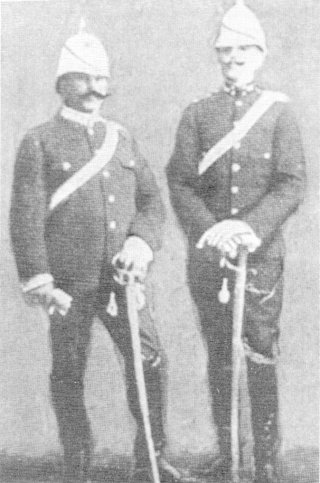
Fig 5. Adolf Schiel and Lieutenant von Wickman.
In Fig. 6 is a second lieutenant of the Staatsartillerie and Lieutenant S Eloff of Johannesburg Fort.(11) The Staats artillerieman wears the normal Austro-Hungarian pattern officer's undress cap and the blue-black full dress tunic with a gold-edged black velvet collar. Thereon are silver rank stars, gold Netherlands pattern shoulder cords, black cording and braid, and rimmed gilt buttons bearing a flaming grenade over crossed cannons. Lieutenant Eloff sports an undress cap, probably dark blue, with silver braid piping and a metal badge comprising the Z.A.R. arms. His undress frock (the same as worn in Figs 3 & 5) is of undetermined colour but is much lighter than that worn in full dress. The constrast with the blue-black of the second lieutenant comes out well in the picture. The black velvet collar edged up the front and around the top in the frock ground colour, has silver embroidered stars and grenades (as for Fig. 4, No.7). The buttons have a rim but no design can be discerned. The shoulder cords previously described under Fig. 3, are very clear in this picture.
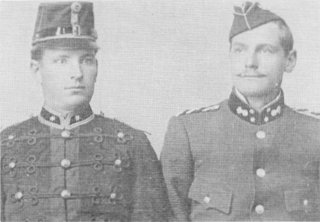
Fig 6. Second Lieutenant of the Staatsartillerie and
First Lieutenant S Eloff of the Fortress Artillery Corps, circa 1899.
Reproduced by kind permission of
the War Museum, Bloemfontein.
Fig. 7 comes from the South African National Museum of Military History collection and the original is captioned 'Lieutenant Odendaal'. In fact it depicts a private of the Fortress Artillery Corps and may be Joseph Johannes Odendaal who entered the Staatsartillerie in 1898; perhaps he was commissioned later. He wears the same pattern field service cap as Lieutenant Eloff in Fig. 6 but with no piping. The frock is of the same design and colour as the officers' undress pattern but the worsted grenades are placed at an angle on the black collar (Fig. 8, No.1) instead of horizontally and a plain (white?) cord loop replaces the twisted shoulder cords of the officers. On the cuffs are dark braid trefoil knots (Fig. 8, No.2). The kneeboots are of the type frequently worn in South Africa which were laced over the ridge of the foot (the forerunner of the field boot). The curve-necked steel spurs have leather straps and steel footchains.
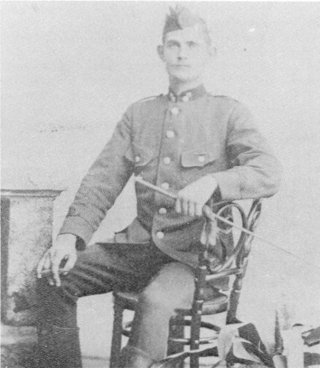
Fig 7. Private, Fortress Artillery Corps,
circa 1899. Reproduced by kind permission of
the SA National Museum of Military History, Saxonwold.
It has thus been established from photographic evidence that the Fortress Artillery Corps which was an arm of the Staatsartillerie, had its own distinctive uniform. Adolf Schiel in his capacity as Lieutenant-Colonel Commandant of Johannesburg Fort affected the uniform of the Fortress Artillery with the rank distinctions of a full Colonel.
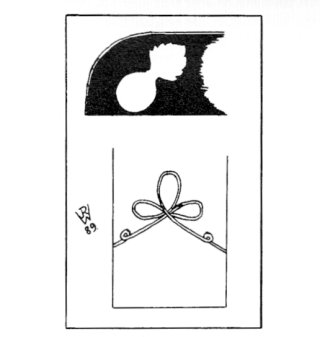
Fig 8. Other ranks' collars and cuffs,
Fortress Artillery Corps.
References
Bibliography
Haupt, D J Die Staatsartillerie van die Suid-Afrikaanse Republiek,
(Thesis, University of Pretoria, 1946).
Ploeger, J The Fortification of Pretoria, Publication No.1, Military
Historical & Archival Services, Pretoria, 1968.
Schiel, A 23 Jahre Sturm und Sonnenschein in Süd-Afrika (Leipzig,
1902).
Van Niekerk, M Adolf Schiel en die Duitse Kommando (Thesis, Univenity
of Pretoria).
Return to Journal Index OR Society's Home page
South African Military History Society / scribe@samilitaryhistory.org